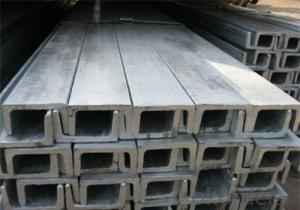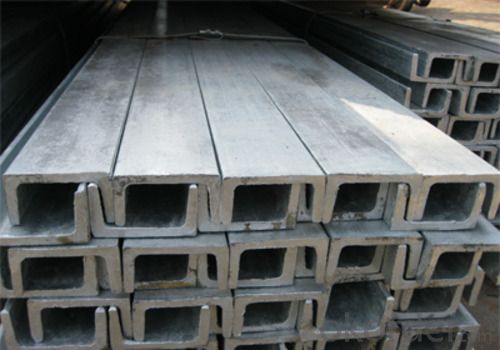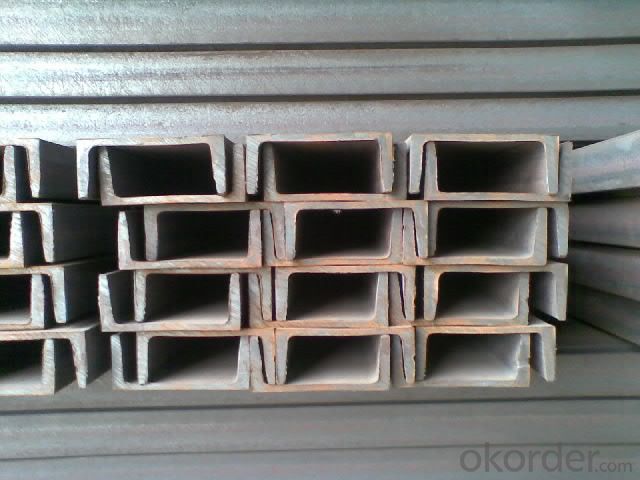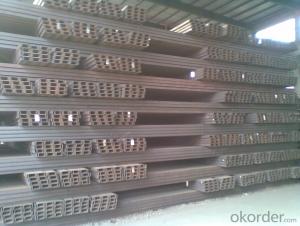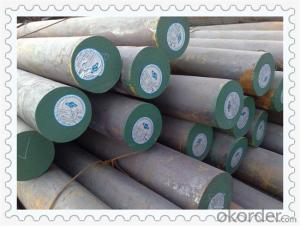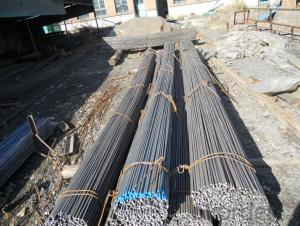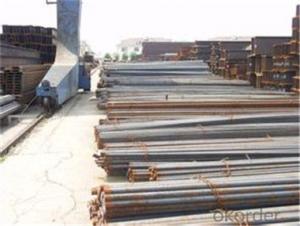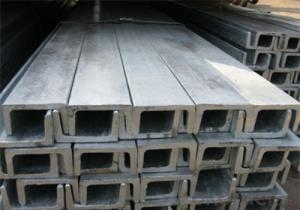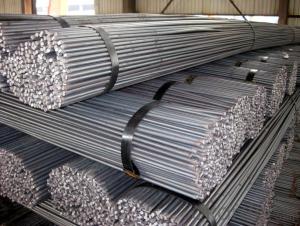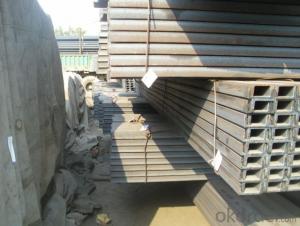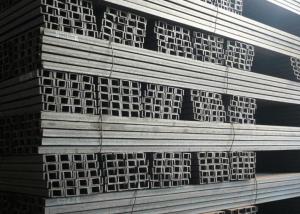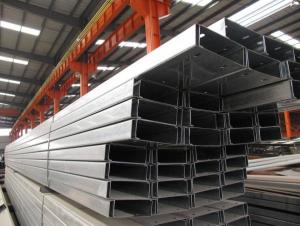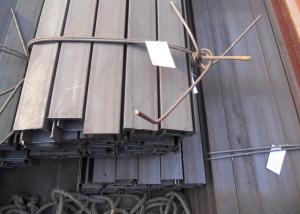Steel Channel Bar A36 Hot Rolled Iron Bar Made In China
- Loading Port:
- Tianjin
- Payment Terms:
- TT or LC
- Min Order Qty:
- 30 m.t.
- Supply Capability:
- 35000 m.t./month
OKorder Service Pledge
OKorder Financial Service
You Might Also Like
Product Description:
OKorder is offering Steel Channel Bar A36 Hot Rolled Iron Bar Made In China at great prices with worldwide shipping. Our supplier is a world-class manufacturer of steel, with our products utilized the world over. OKorder annually supplies products to European, North American and Asian markets. We provide quotations within 24 hours of receiving an inquiry and guarantee competitive prices.
Product Applications:
Steel Channel Bar A36 Hot Rolled Iron Bar Made In China are ideal for structural applications and are widely used in the construction of buildings and bridges, and the manufacturing, petrochemical, and transportation industries.
Product Advantages:
OKorder's Steel Channel Bar A36 Hot Rolled Iron Bar Made In China are durable, strong, and resist corrosion.
Main Product Features:
· Premium quality
· Prompt delivery & seaworthy packing (30 days after receiving deposit)
· Corrosion resistance
· Can be recycled and reused
· Mill test certification
· Professional Service
· Competitive pricing
Product Specifications:
Material: SS400, ST37-2, A36, S235JRG1, Q235, Q345 etc.
Standard: GB/JIS/EN/ASTM/DIN and others.
Packing: In Bundle,Fasten by wire rod with tags.or according to client's requests.
Length: 6meter, 9meter, 12meter
| size (mm) | thickness (mm) | thickness (mm) | weight (kg/m) |
| 50*25 | 3.00~5.00 | 6.00 | 2.37~3.46 |
| 75*40 | 3.80 | 7.00 | 5.30 |
| 75*40 | 4.00 | 7.00 | 5.60 |
| 75*40 | 4.50 | 7.00 | 5.85 |
| 75*40 | 5.00 | 7.00 | 6.92 |
| 100*50 | 3.80 | 6.00 | 7.30 |
| 100*50 | 4.20 | 6.00 | 8.03 |
| 100*50 | 4.50 | 7.50 | 8.97 |
| 100*50 | 5.00 | 7.50 | 9.36 |
| 125*65 | 5.20 | 6.80 | 11.66 |
| 125*65 | 5.30 | 6.80 | 12.17 |
| 125*65 | 5.50 | 8.00 | 12.91 |
| 125*65 | 6.00 | 8.00 | 13.40 |
| 150*75 | 5.50 | 7.30 | 14.66 |
| 150*75 | 5.70 | 10.00 | 16.71 |
| 150*75 | 6.00 | 10.00 | 17.90 |
| 150*75 | 6.50 | 10.00 | 18.60 |
| 150*75 | 9.00 | 12.50 | 24.00 |
| 200*80 | 7.50 | 11.00 | 24.60 |
| 200*90 | 8.00 | 13.50 | 30.30 |
| 250*90 | 9.00 | 13.00 | 34.60 |
| 300*90 | 9.00 | 13.00 | 38.10 |
FAQ:
Q1: Why buy Materials & Equipment from OKorder.com?
A1: All products offered byOKorder.com are carefully selected from China's most reliable manufacturing enterprises. Through its ISO certifications, OKorder.com adheres to the highest standards and a commitment to supply chain safety and customer satisfaction.
Q2: How do we guarantee the quality of our products?
A2: We have established an advanced quality management system which conducts strict quality tests at every step, from raw materials to the final product. At the same time, we provide extensive follow-up service assurances as required.
Q3: How soon can we receive the product after purchase?
A3: Within three days of placing an order, we will begin production. The specific shipping date is dependent upon international and government factors, but is typically 7 to 10 workdays.

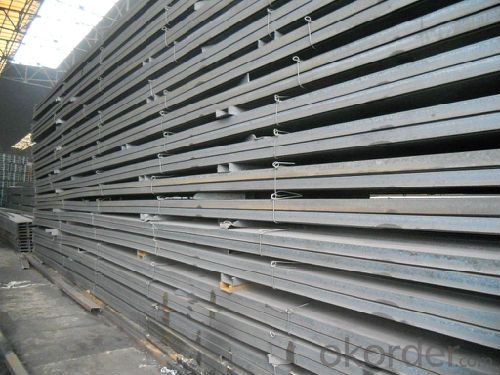
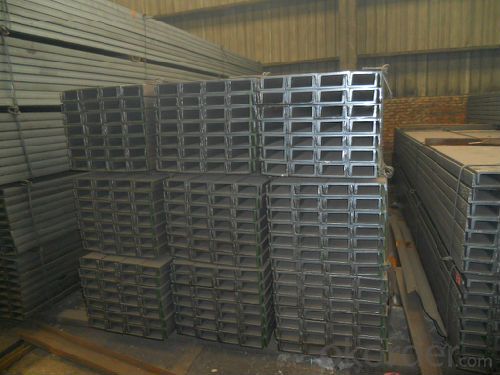
- Q: Are steel channels suitable for the oil and gas manufacturing industry?
- Yes, steel channels are suitable for the oil and gas manufacturing industry. Steel channels are commonly used in various industries, including oil and gas, due to their durability, strength, and versatility. In the oil and gas industry, steel channels are used for various applications such as supporting pipelines, constructing oil rigs, and creating structural frameworks for equipment and machinery. Steel channels provide excellent load-bearing capabilities, high resistance to corrosion and extreme temperatures, and can withstand harsh environmental conditions common in the oil and gas sector. Additionally, steel channels can be easily fabricated, welded, and assembled, making them a preferred choice for constructing complex structures in the oil and gas manufacturing industry. Overall, steel channels offer the necessary characteristics required for the oil and gas industry, making them a suitable choice for various applications in this sector.
- Q: What are the advantages of channel steel?
- Channel steel is divided into ordinary channel steel and light channel steel. Standard Specification for hot-rolled plain channel steel is 5-40#. Specifications for hot rolled flexible channel steel supplied by supply and demand agreement are 6.5-30#. Channel steel is mainly used in building structures, vehicle manufacturing and other industrial structures, and channel steel is often used in conjunction with i-beam.
- Q: What are the common connections used for steel channels?
- The common connections used for steel channels include welding, bolting, and using mechanical connectors such as clevis hangers or strut fittings.
- Q: What are the different testing methods for steel channels?
- There are several testing methods available for steel channels to ensure their quality and performance. These methods include dimensional inspection, visual inspection, magnetic particle testing, ultrasonic testing, and load testing. 1. Dimensional Inspection: This method involves measuring the dimensions of the steel channels to ensure they meet the required specifications. It checks for deviations in length, width, height, and thickness. 2. Visual Inspection: Visual inspection is conducted to detect any visible defects such as surface cracks, corrosion, dents, or other imperfections that can affect the structural integrity or aesthetics of the steel channels. 3. Magnetic Particle Testing: This non-destructive testing method uses magnetic fields and magnetic particles to identify surface and near-surface defects in the steel channels. It is particularly effective in detecting cracks, weld defects, and other discontinuities. 4. Ultrasonic Testing: Ultrasonic testing utilizes high-frequency sound waves to detect internal flaws or defects in the steel channels. It can identify cracks, voids, and other irregularities that may not be visible to the naked eye. 5. Load Testing: Load testing involves subjecting the steel channels to a specified load or force to evaluate their strength and structural integrity. This method helps determine if the channels can withstand the expected loads and stresses they will encounter in their intended applications. These testing methods provide crucial information about the quality and suitability of steel channels for various construction and engineering purposes. By conducting these tests, manufacturers and users can ensure the safety, reliability, and performance of steel channels in their respective applications.
- Q: Can steel channels be used for scaffolding?
- Yes, steel channels can be used for scaffolding.
- Q: How do steel channels contribute to building stability?
- Steel channels contribute to building stability in several ways. Firstly, they provide structural support by distributing the weight and load of the building evenly, helping to prevent sagging or collapsing. Secondly, steel channels increase the overall strength of the structure, making it more resistant to external forces such as wind, earthquakes, and heavy loads. Additionally, steel channels can be used to create stiffening elements in walls, floors, and roofs, which enhance the building's rigidity and reduce any potential for excessive movement or deformation. Overall, steel channels play a vital role in ensuring the stability and safety of the building.
- Q: Classification, use and material of channel steel
- Channel steel is divided into ordinary channel steel and light channel steel. Standard Specification for hot-rolled plain channel steel is 5-40#. Specifications for hot rolled flexible channel steel supplied by supply and demand agreement are 6.5-30#.
- Q: How do steel channels perform in acoustic applications?
- Due to their structural properties, steel channels are effective in acoustic applications. The rigidity and strength of steel make it an ideal material for sound barriers and vibration minimization. Constructing walls, partitions, or ceilings with steel channels can help isolate sound and prevent transmission. The dense nature of steel aids in absorbing and dampening sound waves, reducing intensity and preventing reverberation. This is particularly advantageous in noise-sensitive environments like recording studios, theaters, or conference rooms. Additionally, steel channels can be combined with soundproofing materials or insulation to improve their acoustic performance. Adding layers of foam, fiberglass, or acoustic panels to the steel channels further reduces sound transmission and enhances overall acoustic quality. Furthermore, steel channels provide stability and durability, ensuring the integrity of acoustic structures over time. They can withstand heavy loads and offer fire resistance, making them a reliable choice for acoustic applications. However, it is important to note that steel channels alone may not be sufficient for soundproofing in high-noise environments. The effectiveness of steel channels in acoustic applications also depends on factors like space design, construction quality, and the use of additional soundproofing techniques. In conclusion, steel channels play a valuable role in achieving sound control and acoustic performance in various applications. Their strength, rigidity, and sound-dampening abilities make them suitable for creating sound barriers and minimizing noise transmission.
- Q: What are the design considerations for steel channels?
- Some design considerations for steel channels include the load capacity, structural stability, corrosion resistance, and compatibility with other building materials. Additionally, factors such as the intended use, environmental conditions, and cost-effectiveness also play a role in the design process.
Send your message to us
Steel Channel Bar A36 Hot Rolled Iron Bar Made In China
- Loading Port:
- Tianjin
- Payment Terms:
- TT or LC
- Min Order Qty:
- 30 m.t.
- Supply Capability:
- 35000 m.t./month
OKorder Service Pledge
OKorder Financial Service
Similar products
Hot products
Hot Searches
Related keywords
